-
The
notion of ‘grammatical meaning’.
The word
combines in its semantic structure two meanings – lexical and
grammatical. Lexical meaning
is the individual meaning of the word (e.g. table).
Grammatical meaning
is the meaning of the whole class or a subclass. For example, the
class of nouns has the grammatical meaning of thingness.
If we take a noun (table)
we may say that it possesses its individual lexical meaning (it
corresponds to a definite piece of furniture) and the grammatical
meaning of thingness
(this is the meaning of the whole class). Besides, the noun ‘table’
has the grammatical meaning of a subclass – countableness.
Any verb combines its individual lexical meaning with the grammatical
meaning of verbiality – the ability to denote actions or states. An
adjective combines its individual lexical meaning with the
grammatical meaning of the whole class of adjectives –
qualitativeness – the ability to denote qualities. Adverbs possess
the grammatical meaning of adverbiality – the ability to denote
quality of qualities.
There are some classes of
words that are devoid of any lexical meaning and possess the
grammatical meaning only. This can be explained by the fact that they
have no referents in the objective reality. All function words belong
to this group – articles, particles, prepositions, etc.
-
Types
of grammatical meaning.
The
grammatical meaning may be explicit and implicit. The implicit
grammatical meaning is not expressed
formally (e.g. the word table does
not contain any hints in its form as to it being inanimate). The
explicit grammatical
meaning is always marked morphologically – it has its marker. In
the word cats the
grammatical meaning of plurality is shown in the form of the noun;
cat’s –
here the grammatical meaning of possessiveness is shown by the form
‘s; is
asked – shows the explicit
grammatical meaning of passiveness.
The
implicit grammatical meaning may be of two types – general and
dependent. The general
grammatical meaning is the meaning of the whole word-class, of a part
of speech (e.g. nouns – the general grammatical meaning of
thingness). The dependent
grammatical meaning is the meaning of a subclass within the same part
of speech. For instance, any verb possesses the dependent grammatical
meaning of transitivity/intransitivity,
terminativeness/non-terminativeness, stativeness/non-stativeness;
nouns have the dependent grammatical meaning of
contableness/uncountableness and animateness/inanimateness. The most
important thing about the dependent grammatical meaning is that it
influences the realization of grammatical categories restricting them
to a subclass. Thus the dependent grammatical meaning of
countableness/uncountableness influences the realization of the
grammatical category of number as the number category is realized
only within the subclass of countable nouns, the grammatical meaning
of animateness/inanimateness influences the realization of the
grammatical category of case, teminativeness/non-terminativeness —
the category of tense, transitivity/intransitivity – the category
of voice.
GRAMMATICAL
MEANING

IMPLICIT
GENERAL
DEPENDENT
-
Grammatical
categories.
Grammatical categories are
made up by the unity of identical grammatical meanings that have the
same form (e.g. singular::plural). Due to dialectal unity of language
and thought, grammatical categories correlate, on the one hand, with
the conceptual categories and, on the other hand, with the objective
reality. It may be shown with the help of a triangle model:
Conceptual
reality Conceptual category
Objective
reality Lingual reality Objective category Grammatical
category
It
follows that we may define grammatical categories as references of
the corresponding objective categories. For example, the objective
category of time
finds its representation in the grammatical category of tense,
the objective category of quantity finds
its representation in the grammatical category of number.
Those grammatical categories that have references in the objective
reality are called referential
grammatical categories. However, not
all of the grammatical categories have references in the objective
reality, just a few of them do not correspond to anything in the
objective reality. Such categories correlate only with conceptual
matters:

correlate
Lingual
correlate
They
are called significational categories.
To this type belong the categories of mood
and degree.
Speaking about the grammatical category of mood we can say that it
has modality
as its conceptual correlate. It can be explained by the fact that it
does not refer to anything in the objective reality – it expresses
the speaker’s attitude to what he says.
-
The
notion of opposition.
Any
grammatical category must be represented by at least two grammatical
forms (e.g. the grammatical category of number – singular and
plural forms). The relation between two grammatical forms differing
in meaning and external signs is called opposition
– book::books
(unmarked member/marked member). All grammatical categories find
their realization through oppositions, e.g. the grammatical category
of number is realized through the opposition singular::plural.
Taking
all the above mentioned into consideration, we may define the
grammatical category as the opposition between two mutually exclusive
form-classes (a form-class is a set of words with the same explicit
grammatical meaning).
Means
of realization of grammatical
categories may be synthetic (near –
nearer) and analytic (beautiful
– more beautiful).
-
Transposition
and neutralization of morphological forms.
In the process of
communication grammatical categories may undergo the processes of
transposition and neutralization.
Transposition
is the use of a linguistic unit in an
unusual environment or in the function that is not characteristic of
it (He is a lion).
In the sentence He is coming tomorrow
the paradigmatic meaning of the
continuous form is reduced and a new meaning appears – that of a
future action. Transposition always results in the neutralization of
a paradigmatic meaning. Neutralization
is the reduction of the opposition to one of its members : custom ::
customs – x :: customs; x :: spectacles.
LECTURE 4: THE PARTS OF
SPEECH PROBLEM. WORD CLASSES
The parts of speech are
classes of words, all the members of these classes having certain
characteristics in common which distinguish them from the members of
other classes. The problem of word classification into parts of
speech still remains one of the most controversial problems in modern
linguistics. The attitude of grammarians with regard to parts of
speech and the basis of their classification varied a good deal at
different times. Only in English grammarians have been vacillating
between 3 and 13 parts of speech. There are four approaches to the
problem:
-
Classical
(logical-inflectional) -
Functional
-
Distributional
-
Complex
The
classical
parts of speech theory goes back to ancient times. It is based on
Latin grammar. According to the Latin classification of the parts of
speech all words were divided dichotomically into declinable
and indeclinable
parts of speech. This system was
reproduced in the earliest English grammars. The first of these
groups, declinable words, included nouns, pronouns, verbs and
participles, the second – indeclinable words – adverbs,
prepositions, conjunctions and interjections. The
logical-inflectional classification is quite successful for Latin or
other languages with developed morphology and synthetic paradigms but
it cannot be applied to the English language because the principle of
declinability/indeclinability is not relevant for analytical
languages.
A
new approach to the problem was introduced in the XIX century by
Henry Sweet. He took into account the peculiarities of the English
language. This approach may be defined as functional.
He resorted to the functional features of words and singled out
nominative units and particles. To nominative
parts of speech belonged noun-words
(noun, noun-pronoun, noun-numeral, infinitive, gerund),
adjective-words
(adjective, adjective-pronoun, adjective-numeral, participles), verb
(finite verb, verbals – gerund, infinitive, participles), while
adverb, preposition,
conjunction
and interjection
belonged to the group of particles.
However, though the criterion for classification was functional,
Henry Sweet failed to break the tradition and classified words into
those having morphological forms and lacking morphological forms, in
other words, declinable and indeclinable.
A
distributional approach
to the parts to the parts of speech
classification can be illustrated by the classification introduced by
Charles Fries. He wanted to avoid the traditional terminology and
establish a classification of words based on distributive analysis,
that is, the ability of words to combine with other words of
different types. At the same time, the lexical meaning of words was
not taken into account. According to Charles Fries, the words in
such sentences as 1. Woggles ugged diggles; 2. Uggs woggled diggs;
and 3. Woggs diggled uggles are quite evident structural signals,
their position and combinability are enough to classify them into
three word-classes. In this way, he introduced four major classes
of words and 15 form-classes.
Let us see how it worked. Three test frames
formed the basis for his analysis:
Frame
A — The concert was good (always);
Frame
B — The clerk remembered the tax (suddenly);
Frame
C – The team went there.
It
turned out that his four classes of words were practically the same
as traditional nouns, verbs, adjectives and adverbs. What is really
valuable in Charles Fries’ classification is his investigation of
15 groups of function words (form-classes) because he was the first
linguist to pay attention to some of their peculiarities.
All
the classifications mentioned above appear to be one-sided because
parts of speech are discriminated on the basis of only one aspect of
the word: either its meaning or its form, or its function.
In
modern linguistics, parts of speech are discriminated according to
three criteria: semantic, formal and functional. This approach may be
defined as complex.
The semantic
criterion presupposes the grammatical meaning of the whole class of
words (general grammatical meaning). The formal
criterion reveals paradigmatic
properties: relevant grammatical categories, the form of the words,
their specific inflectional and derivational features. The functional
criterion concerns the syntactic
function of words in the sentence and their combinability. Thus, when
characterizing any part of speech we are to describe: a) its
semantics; b) its morphological features; c) its syntactic
peculiarities.
The
linguistic evidence drawn from our grammatical study makes it
possible to divide all the words of the language into:
-
those
denoting things, objects, notions, qualities, etc. – words with
the corresponding references in the objective reality – notional
words; -
those
having no references of their own in the objective reality; most of
them are used only as grammatical means to form up and frame
utterances – function words,
or grammatical words.
It is
commonly recognized that the notional parts of speech are nouns,
pronouns, numerals, verbs, adjectives, adverbs; the functional parts
of speech are articles, particles, prepositions, conjunctions and
modal words.
The
division of language units into notion and function words reveals the
interrelation of lexical and grammatical types of meaning. In
notional words the lexical meaning is predominant. In function words
the grammatical meaning dominates over the lexical one. However, in
actual speech the border line between notional and function words is
not always clear cut. Some notional words develop the meanings
peculiar to function words — e.g. seminotional words – to
turn, to get, etc.
Notional
words constitute the bulk of the existing word stock while function
words constitute a smaller group of words. Although the number of
function words is limited (there are only about 50 of them in Modern
English), they are the most frequently used units.
Generally
speaking, the problem of words’ classification into parts of speech
is far from being solved. Some words cannot find their proper place.
The most striking example here is the class of adverbs. Some language
analysts call it a ragbag, a dustbin
(Frank Palmer), Russian academician V.V.Vinogradov defined the class
of adverbs in the Russian language as мусорная
куча. It can be explained by the
fact that to the class of adverbs belong those words that cannot find
their place anywhere else. At the same time, there are no grounds for
grouping them together either. Compare: perfectly
(She speaks English perfectly)
and again
(He is here again).
Examples are numerous (all temporals). There are some words that do
not belong anywhere — e.g. after all.
Speaking about after all
it should be mentioned that this unit is quite often used by native
speakers, and practically never by our students. Some more striking
examples: anyway, actually, in fact.
The problem is that if these words belong nowhere, there is no place
for them in the system of words, then how can we use them correctly?
What makes things worse is the fact that these words are devoid of
nominative power, and they have no direct equivalents in the
Ukrainian or Russian languages. Meanwhile, native speakers use these
words subconsciously, without realizing how they work.
LECTURE
5: THE NOUN
1.General
characteristics.
The noun is
the central lexical unit of language. It is the main nominative unit
of speech. As any other part of speech, the noun can be characterised
by three criteria: semantic
(the meaning), morphological
(the form and grammatical catrgories) and syntactical
(functions, distribution).
Semantic
features of the noun. The noun possesses the grammatical meaning of
thingness, substantiality. According to different principles of
classification nouns fall into several subclasses:
-
According
to the type of nomination they may be proper
and common; -
According
to the form of existence they may be animate
and inanimate.
Animate nouns in their turn fall into human
and non-human. -
According
to their quantitative structure nouns can be countable
and uncountable.
This set of
subclasses cannot be put together into one table because of the
different principles of classification.
Morphological
features of the noun. In accordance
with the morphological structure of the stems all nouns can be
classified into: simple,
derived (
stem + affix, affix + stem – thingness);
compound (
stem+ stem – armchair
) and composite
( the Hague ). The noun has morphological categories of number and
case. Some scholars admit the existence of the category of gender.
Syntactic
features of the noun. The noun can be
used un the sentence in all syntactic
functions
but predicate. Speaking about noun combinability,
we can say that it can go into right-hand and left-hand connections
with practically all parts of speech. That is why practically all
parts of speech but the verb can act as noun determiners.
However, the most common noun determiners are considered to be
articles, pronouns, numerals, adjectives and nouns themselves in the
common and genitive case.
2.
The category of number
The grammatical category of
number is the linguistic representation of the objective category of
quantity. The number category is realized through the opposition of
two form-classes: the plural form :: the singular form. The category
of number in English is restricted in its realization because of the
dependent implicit grammatical meaning of
countableness/uncountableness. The number category is realized only
within subclass of countable nouns.
The
grammatical meaning of number may not coincide with the notional
quantity: the noun in the singular does not necessarily denote one
object while the plural form may be used to denote one object
consisting of several parts. The singular form may denote:
-
oneness
(individual separate object – a cat); -
generalization
(the meaning of the whole class – The
cat is a domestic animal); -
indiscreteness
(нерасчлененность or
uncountableness — money, milk).
The plural
form may denote:
-
the
existence of several objects (cats); -
the
inner discreteness (внутренняя
расчлененность, pluralia
tantum, jeans).
To sum it
up, all nouns may be subdivided into three groups:
-
The
nouns in which the opposition of explicit
discreteness/indiscreteness is expressed : cat::cats; -
The
nouns in which this opposition is not expressed explicitly but is
revealed by syntactical and lexical correlation in the context.
There are two groups here:
-
Singularia
tantum. It covers different groups of nouns: proper names, abstract
nouns, material nouns, collective nouns; -
Pluralia
tantum. It covers the names of objects consisting of several parts
(jeans), names of sciences (mathematics), names of diseases, games,
etc.
-
The
nouns with homogenous number forms. The number opposition here is
not expressed formally but is revealed only lexically and
syntactically in the context: e.g. Look!
A sheep is eating grass. Look! The sheep are eating grass.
3. The
category of case.
Case
expresses the relation of a word to another word in the word-group or
sentence (my sister’s coat). The category of case correlates with
the objective category of possession. The case category in English is
realized through the opposition: The Common Case :: The Possessive
Case (sister :: sister’s). However, in modern linguistics the term
“genitive case” is used instead of the “possessive case”
because the meanings rendered by the “`s” sign are not only those
of possession. The scope of meanings rendered by the Genitive Case is
the following :
-
Possessive
Genitive : Mary’s father – Mary has a father, -
Subjective
Genitive: The doctor’s arrival – The doctor has arrived, -
Objective
Genitive : The man’s release – The man was released, -
Adverbial
Genitive : Two hour’s work – X worked for two hours, -
Equation
Genitive : a mile’s distance – the distance is a mile, -
Genitive
of destination: children’s books – books for children, -
M
ixed
Group: yesterday’s paper

school cannot be reduced to one nucleus
John’s
word
To avoid
confusion with the plural, the marker of the genitive case is
represented in written form with an apostrophe. This fact makes
possible disengagement of –`s form from the noun to which it
properly belongs. E.g.: The
man I saw yesterday’s son,
where -`s is appended to the whole group (the so-called group
genitive). It may
even follow a word which normally does not possess such a formant, as
in somebody else’s
book.
There is no
universal point of view as to the case system in English. Different
scholars stick to a different number of cases.
-
There
are two cases. The Common one and The Genitive; -
There
are no cases at all, the form `s is optional because the same
relations may be expressed by the ‘of-phrase’: the
doctor’s arrival – the arrival of the doctor; -
There
are three cases: the Nominative, the Genitive, the Objective due to
the existence of objective pronouns me,
him, whom; -
Case
Grammar. Ch.Fillmore introduced syntactic-semantic classification of
cases. They show relations in the so-called deep structure of the
sentence. According to him, verbs may stand to different relations
to nouns. There are 6 cases:
-
Agentive
Case (A) John
opened the door; -
Instrumental
case (I) The key
opened the door;
John used the key to open the door; -
Dative
Case (D) John
believed that he would win (the case of the animate being affected
by the state of action identified by the verb); -
Factitive
Case (F) The key
was damaged ( the result of the action or state identified by the
verb); -
Locative
Case (L) Chicago is
windy; -
Objective
case (O) John stole
the book.
4. The
Problem of Gender in English
Gender
plays a relatively minor part in the grammar of English by comparison
with its role in many other languages. There is no gender concord,
and the reference of the pronouns he,
she, it is very
largely determined by what is sometimes referred to as ‘natural’
gender for English, it depends upon the classification of persons and
objects as male, female or inanimate. Thus, the recognition of gender
as a grammatical category is logically independent of any particular
semantic association.
According
to some language analysts (B.Ilyish, F.Palmer, and E.Morokhovskaya),
nouns have no category of gender in Modern English. Prof.Ilyish
states that not a single word in Modern English shows any
peculiarities in its morphology due to its denoting male or female
being. Thus, the words husband
and wife
do not show any
difference in their forms due to peculiarities of their lexical
meaning. The difference between such nouns as actor
and actress
is a purely lexical one. In other words, the category of sex should
not be confused with the category of sex, because sex is an objective
biological category.
It correlates with gender only when sex differences of living beings
are manifested in the language grammatically (e.g. tiger
– tigress).
Still, other scholars (M.Blokh, John Lyons) admit the existence of
the category of gender. Prof.Blokh states that the existence of the
category of gender in Modern English can be proved by the correlation
of nouns with personal pronouns of the third person (he,
she, it).
Accordingly, there are three genders in English: the neuter
(non-person) gender, the masculine gender, the feminine gender.
LECTURE
6: THE VERB.
1.General characteristics
Grammatically
the verb is the most complex part of speech. First of all it performs
the central role in realizing predication —
connection between situation in the utterance and reality. That is
why the verb is of primary informative significance in an utterance.
Besides, the verb possesses quite a lot of grammatical categories.
Furthermore, within the class of verb various subclass divisions
based on different principles of classification can befound.
Semantic
features of the verb. The verb possesses the grammatical meaning of
verbiality — the
ability to denote a process developing in time. This meaning is
inherent not only in the verbs denoting processes, but also in those
denoting states, forms of existence, evaluations, etc.
Morphological
features of the verb. The verb possesses the following grammatical
categories: tense, aspect, voice, mood, person, number, finitude and
phase. The common categories for finite and non-finite forms are
voice, aspect, phase and finitude. The grammatical categories of the
English verb find their expression in synthetical and analytical
forms. The formative elements expressing these categories are
grammatical affixes, inner inflexion and
function words.
Some categories have only synthetical forms (person,
number), others
— only analytical (voice).
There are also categories expressed by both synthetical and
analytical forms (mood, tense, aspect).
Syntactic features. The
most universal syntactic feature of verbs is their ability to be
modified by adverbs. The second important syntactic criterion is the
ability of the verb to perform the syntactic function of the
predicate. However, this criterion is not absolute because only
finite forms can perform this function while non-finite forms can be
used in any function but predicate. And finally, any verb in the form
of the infinitive can be combined with a modal verb.
2.
Classifications of English verbs
According to different
principles of classification, classifications can be morphological,
lexical-morphological, syntactical and functional.
A.
Morphological classifications..
I.
According to their stem-types all verbs fall into: simple (to
go), sound-replacive
(food —
to feed, blood —
to bleed), stress-replacive
(import
— to im port,
transport —
to transport, expanded
(with the help of suffixes and prefixes): cultivate,
justify, overcome, composite
(correspond to composite nouns): to
blackmail), phrasal:
to have a smoke, to give a smile
(they always have an ordinary verb as
an equivalent). 2.According
to the way of forming past tenses and Participle
II verbs can be regular
and irregular.
B.
Lexical-morphological classification is
based on the implicit grammatical meanings of the verb. According to
the implicit grammatical meaning of transitivity/intransitivity verbs
fall into transitive
and intransitive.
According to the implicit grammatical meaning of
stativeness/non-stativeness verbs fall into stative
and dynamic.
According to the implicit grammatical meaning of
terminativeness/non-terminativeness verbs fall into terminative
and durative.
This classification is closely connected with the categories of
Aspect and Phase.
C.
Syntactic
classifications. According to the nature of predication (primary and
secondary) all verbs fall into finite
and non-finite.
According to syntagmatic properties (valency) verbs can be of
obligatory
and optional valency,
and thus they may have some directionality or be devoid of any
directionality. In this way, verbs fall into the verbs of directed
(to see, to take, etc.)
and non-directed
action (to arrive, to drizzle, etc.):
Syntagmatic
classification of English verbs
(according
to prof.G.Pocheptsov)

Vobj. She shook her head
Vaddr. He phoned me

– V10 Vobj.-addr. She gave me
her pen
V11
– V15 Vadv. She behaved well
V1
V2 – V24 V16 – V24 Vobj.-adv. He put his hat
on the table
Соседние файлы в предмете [НЕСОРТИРОВАННОЕ]
- #
- #
- #
- #
- #
- #
- #
- #
- #
- #
- #
Glossary of Grammatical and Rhetorical Terms
Updated on February 12, 2020
Grammatical meaning is the meaning conveyed in a sentence by word order and other grammatical signals. Also called structural meaning. Linguists distinguish grammatical meaning from lexical meaning (or denotation)—that is, the dictionary meaning of an individual word. Walter Hirtle notes that «a word expressing the same idea can fulfill different syntactic functions. The grammatical difference between the throw in to throw a ball and that in a good throw has long been attributed to a difference of meaning not of the lexical type described in dictionaries, but of the more abstract, formal type described in grammars» (Making Sense out of Meaning, 2013).
Grammatical Meaning and Structure
- «Words grouped together randomly have little meaning on their own, unless it occurs accidentally. For example, each of the following words has lexical meaning at the word level, as is shown in a dictionary, but they convey no grammatical meaning as a group:
a. [without grammatical meaning]
Lights the leap him before the down hill purple.
However when a special order is given to these words, grammatical meaning is created because of the relationships they have to one another.
a. [with grammatical meaning]
«The purple lights leap down the hill before him.» (Bernard O’Dwyer, Modern English Structures: Form, Function and Position. Broadview Press, 2006)
Number and Tense
- «Different forms of the same lexeme will generally, though not necessarily, differ in meaning: they will share the same lexical meaning (or meanings) but differ in respect of their grammatical meaning, in that one is the singular form (of a noun of a particular subclass) and the other is the plural form (of a noun of a particular subclass); and the difference between singular and plural forms, or—to take another example—the difference between the past, present and future forms of verbs, is semantically relevant: it affects sentence-meaning. The meaning of a sentence . . . is determined partly by the meaning of the words (i.e., lexemes) of which it is composed and partly by its grammatical meaning.» (John Lyons, Linguistic Semantics: An Introduction. Cambridge University Press, 1996)
Word Class and Grammatical Meaning
- «Note . . . how word class can make a difference to meaning. Consider the following:
He brushed his muddy shoes. [verb]
He gave his muddy shoes a brush. [noun]
Changing from the construction with a verb to one with a noun involves more than just a change of word class in these sentences. There is also a modification of meaning. The verb emphasizes the activity and there is a greater implication that the shoes will end up clean, but the noun suggests that the activity was much shorter, more cursory and performed with little interest, so the shoes were not cleaned properly.
- «Now compare the following:
Next summer I am going to Spain for my holidays. [adverb]
Next summer will be wonderful. [noun]
According to traditional grammar, next summer in the first sentence is an adverbial phrase, while in the second it is a noun phrase. Once again, the change of grammatical category also entails some change of meaning. The adverbial phrase is an adjunct, a component bolted on to the rest of the sentence, and merely provides the temporal context for the whole utterance. On the other hand, use of the phrase as a noun in subject position renders it less circumstantial and less abstract; it is now the theme of the utterance and a more sharply delimited period in time.» (Brian Mott, Introductory Semantics and Pragmatics for Spanish Learners of English. Edicions Universitat Barcelona, 2009)
- Размер: 2.6 Mегабайта
- Количество слайдов: 89
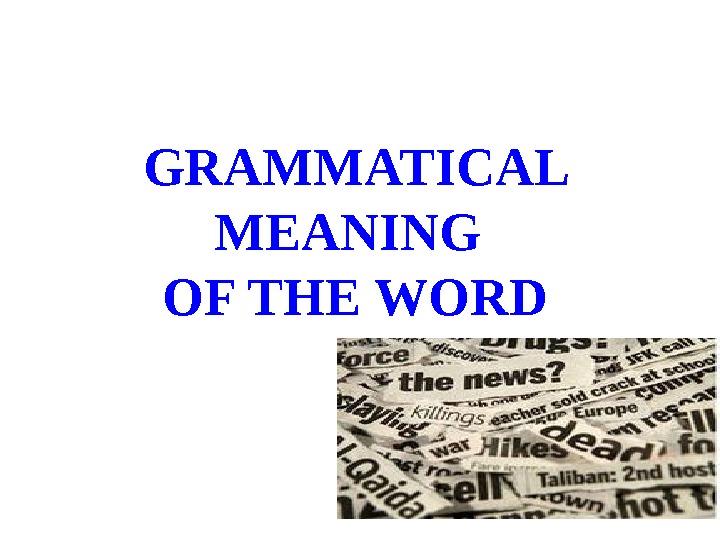

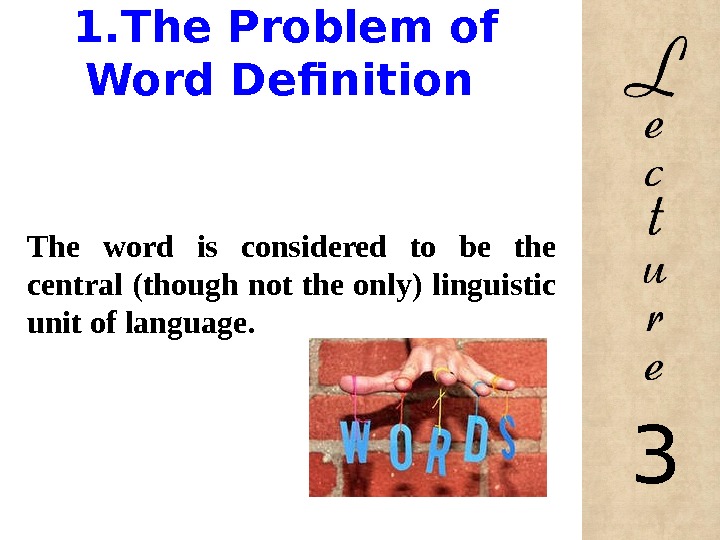
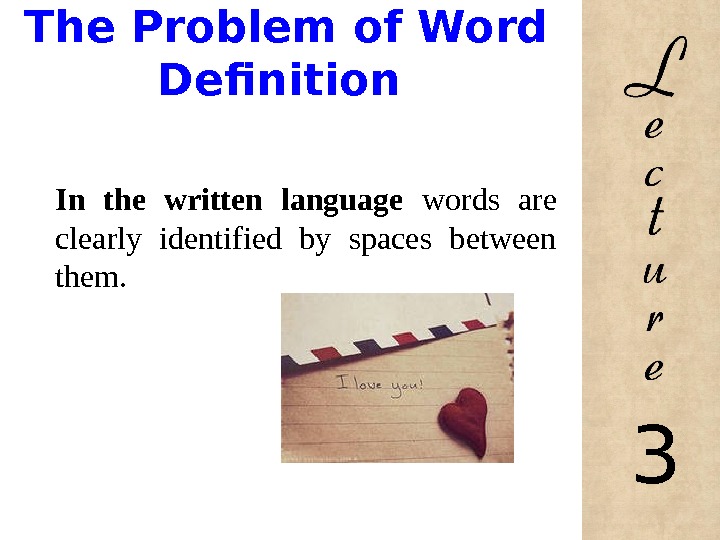
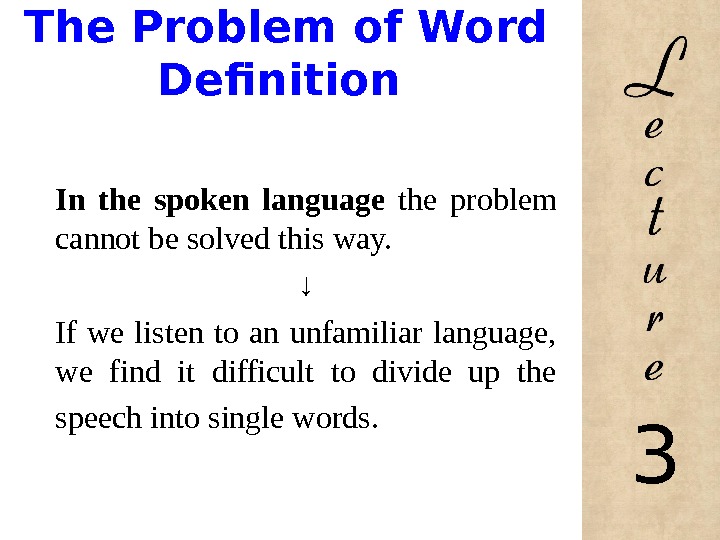
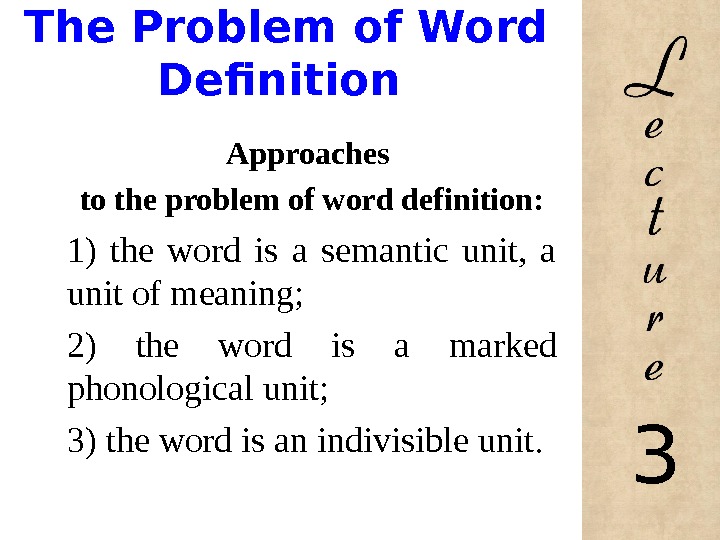
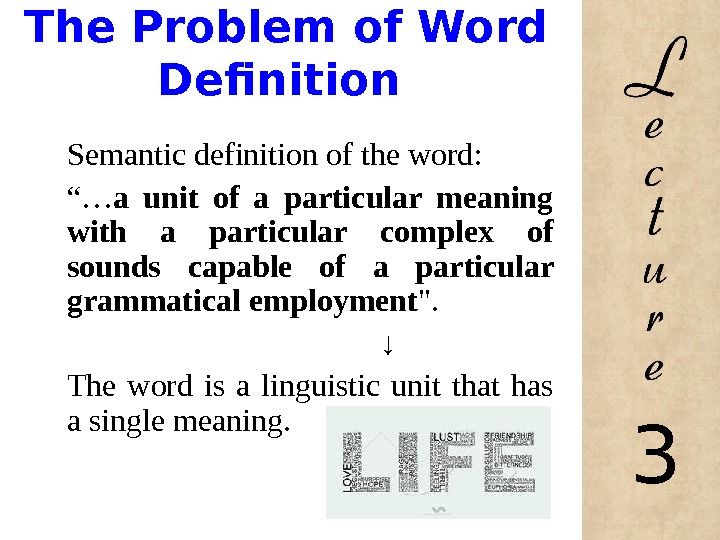
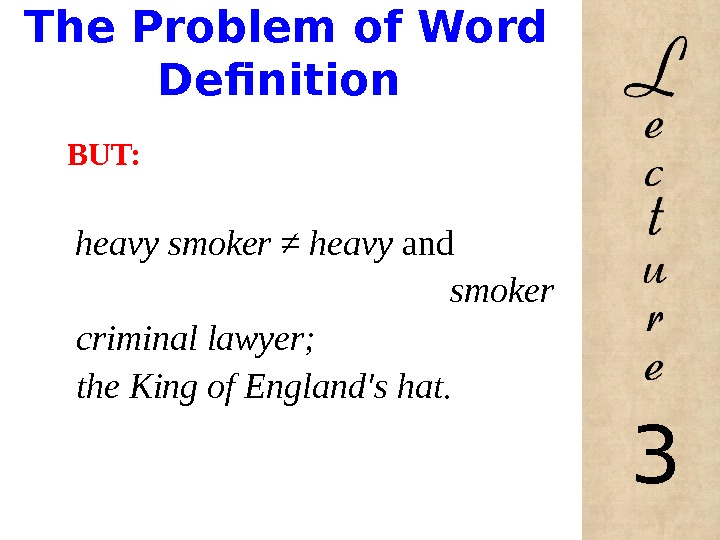




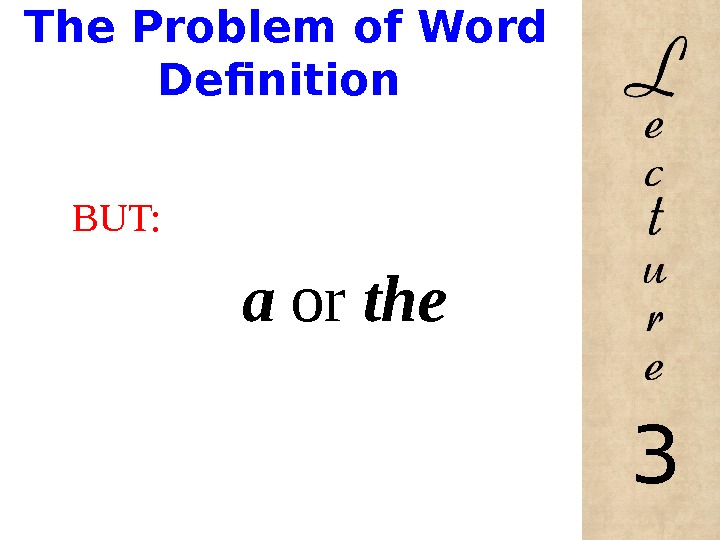
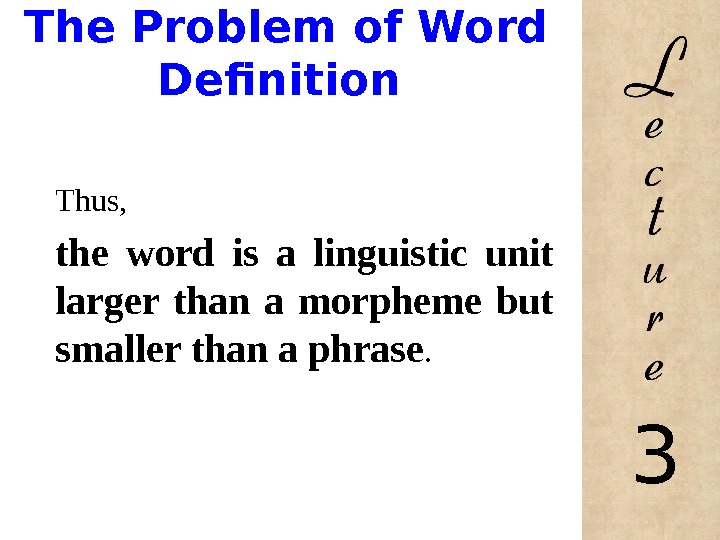
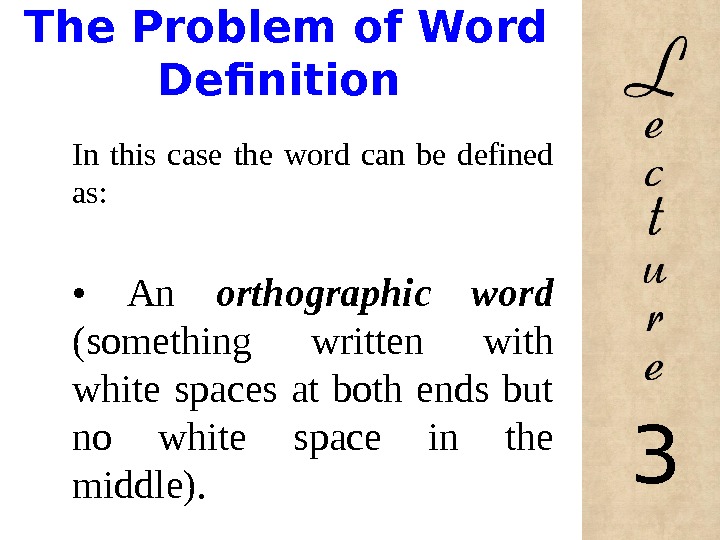

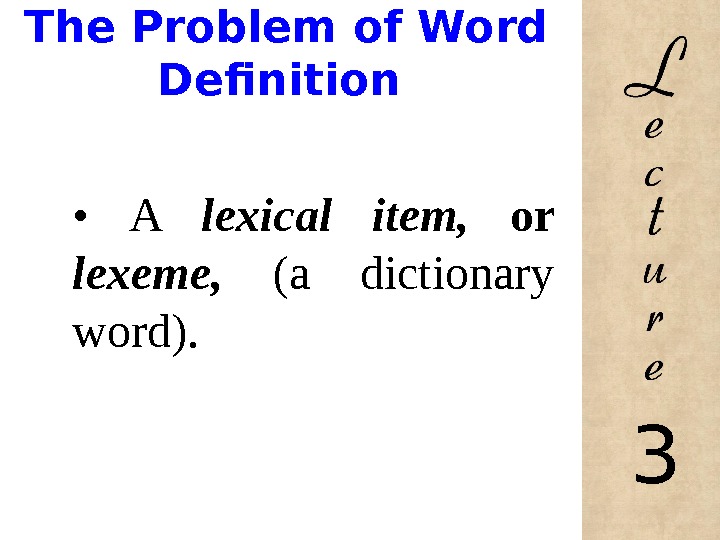



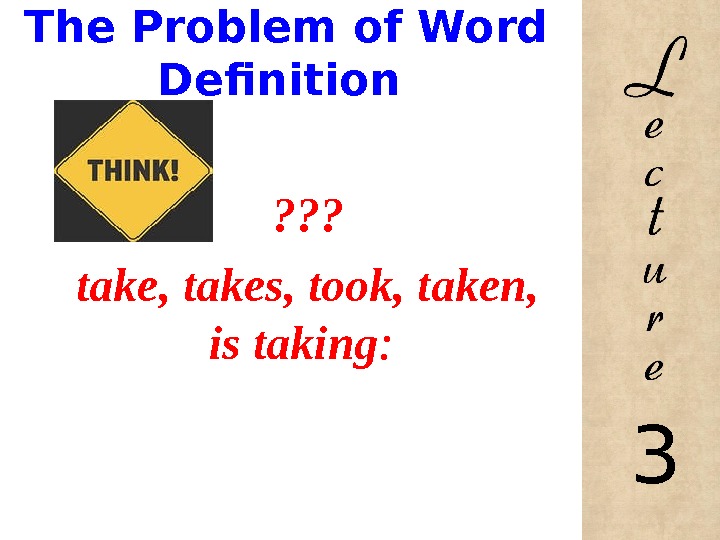
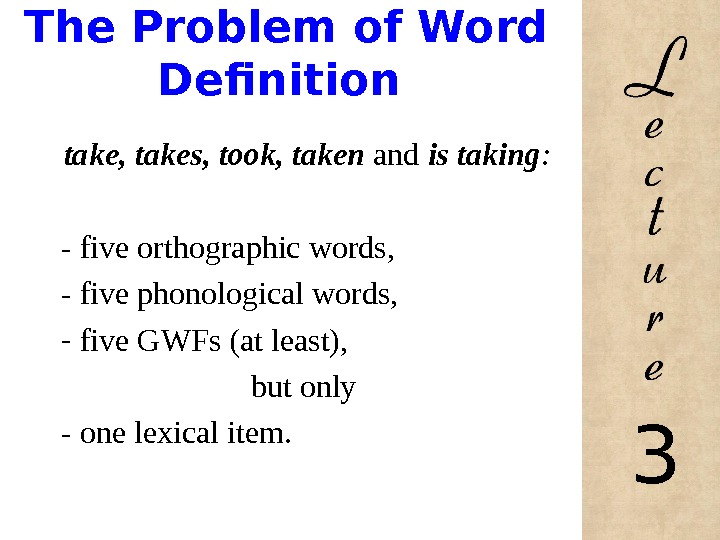
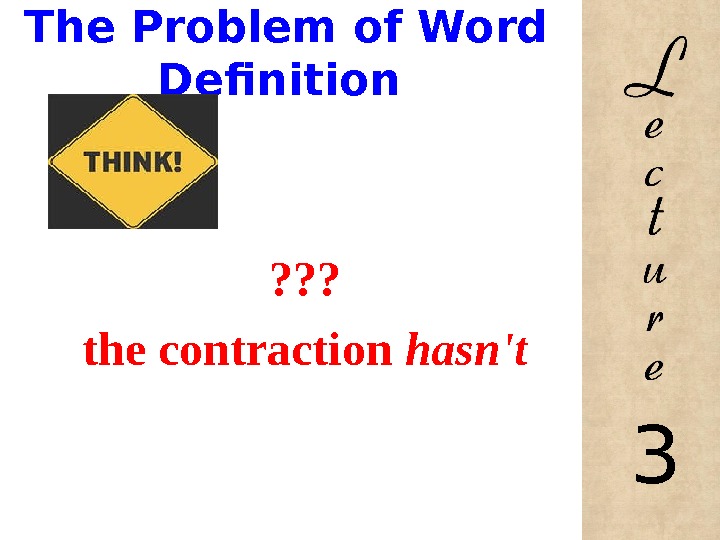




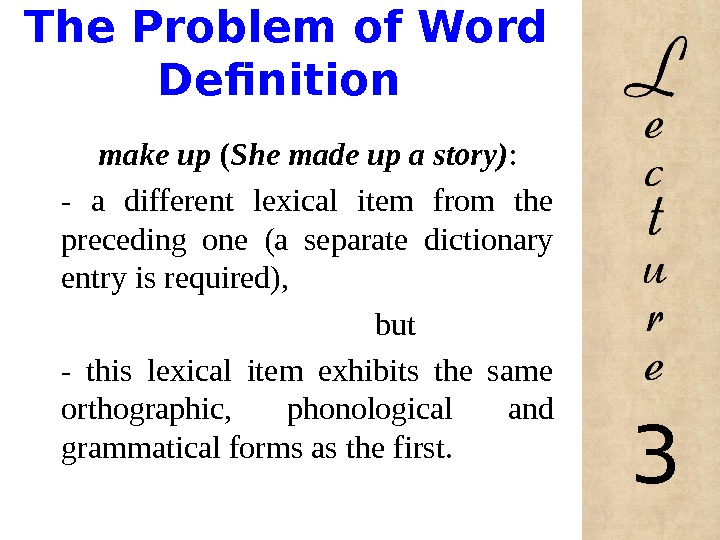
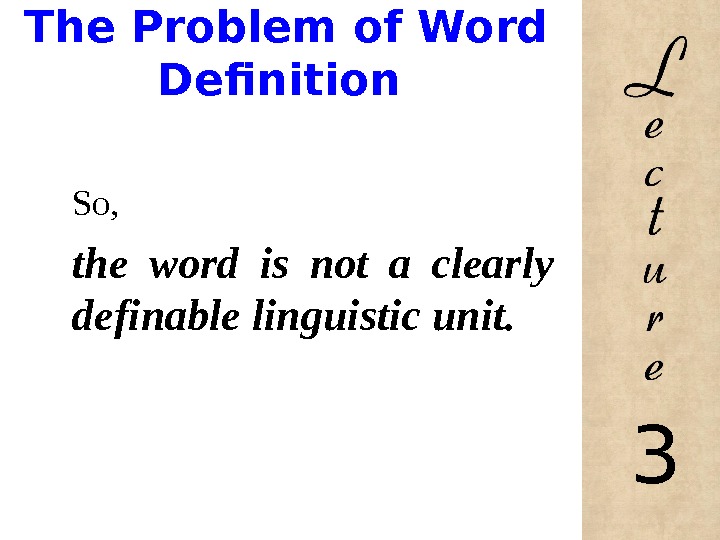

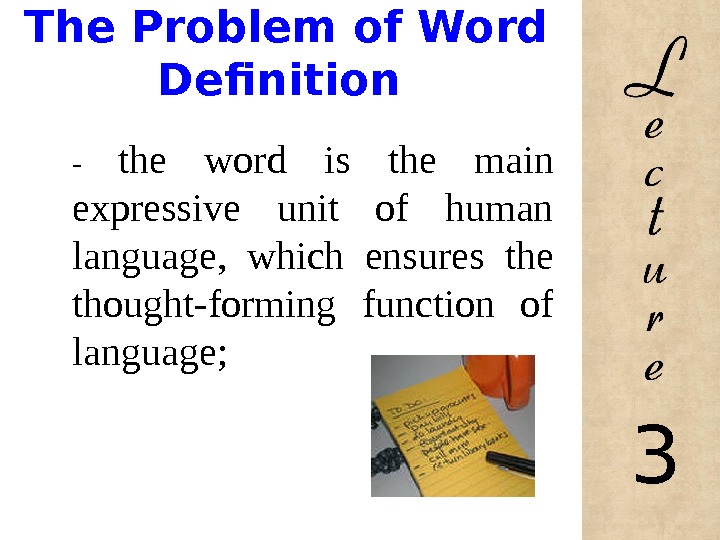
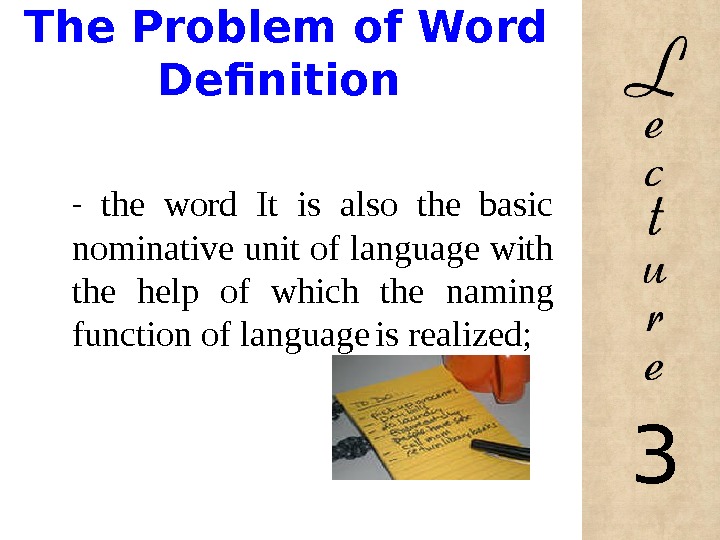
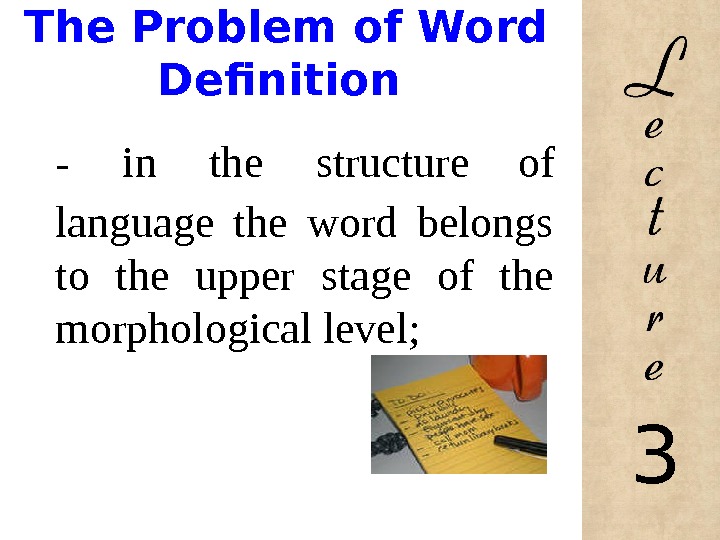
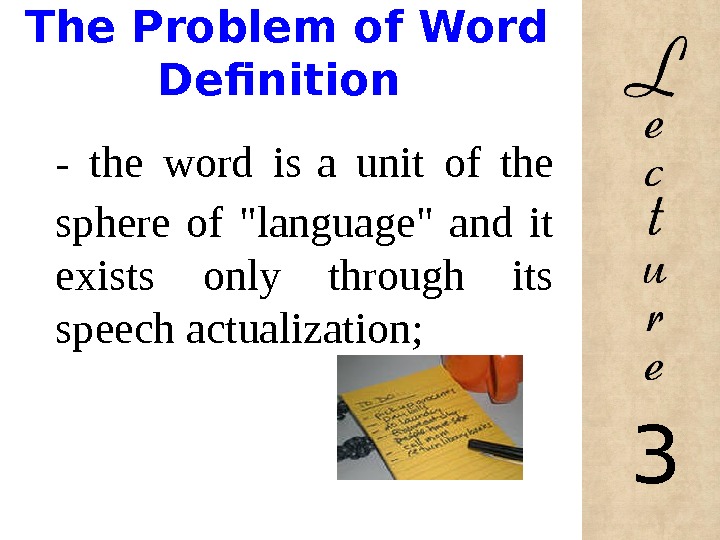
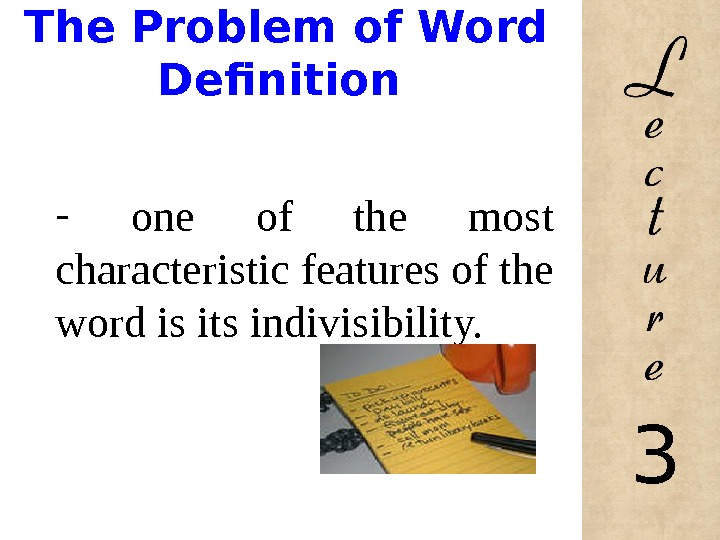
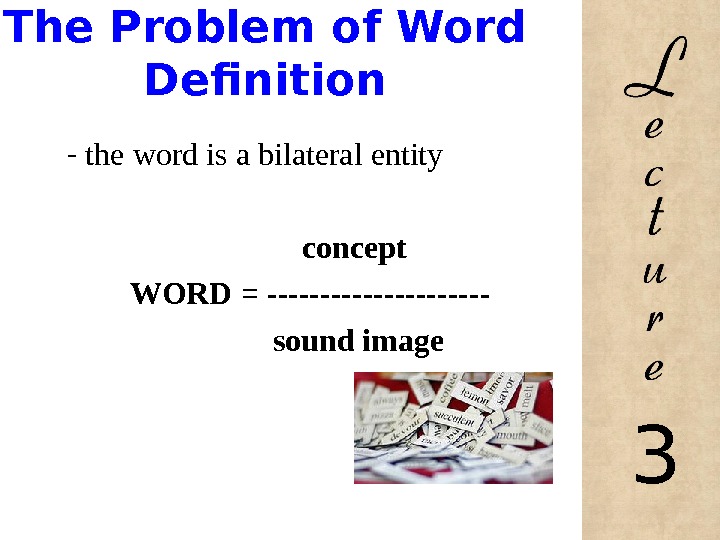


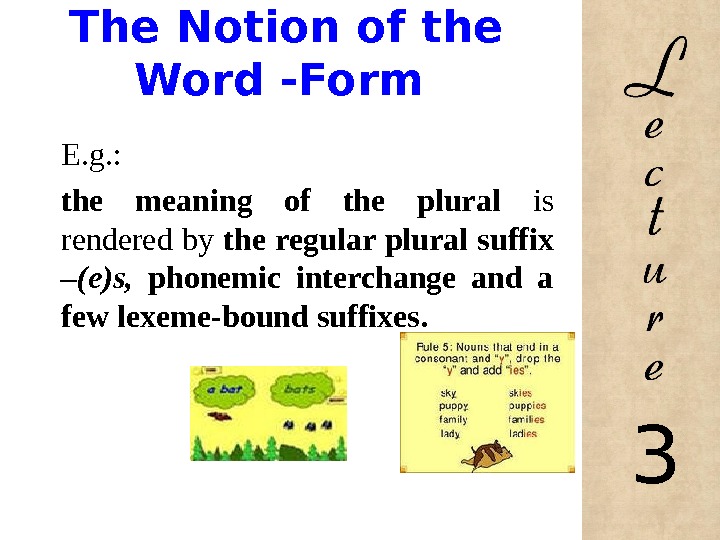

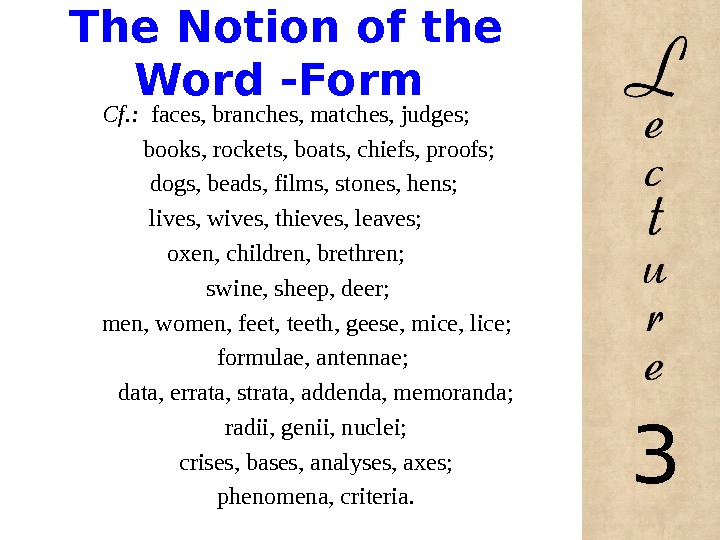
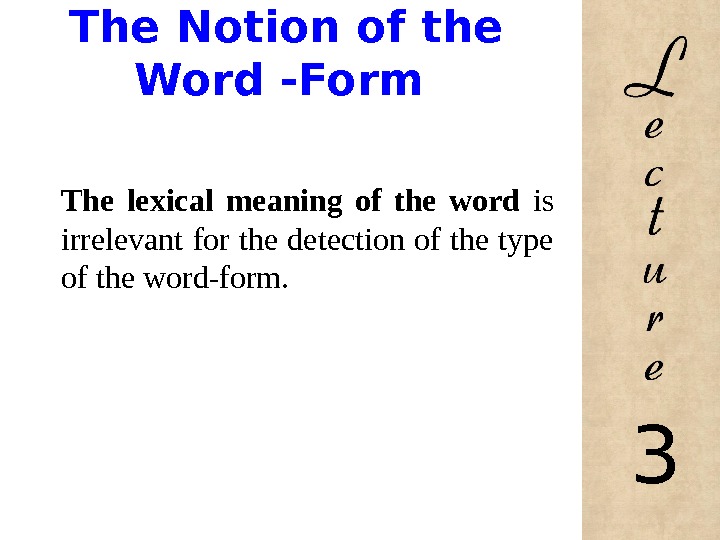

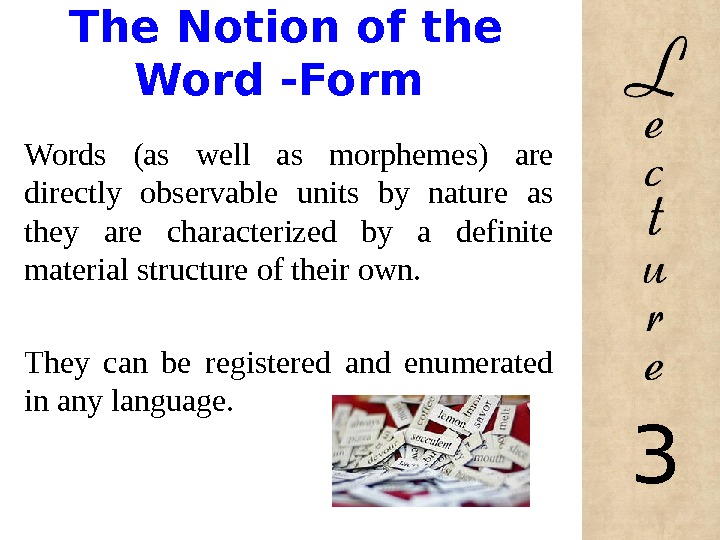
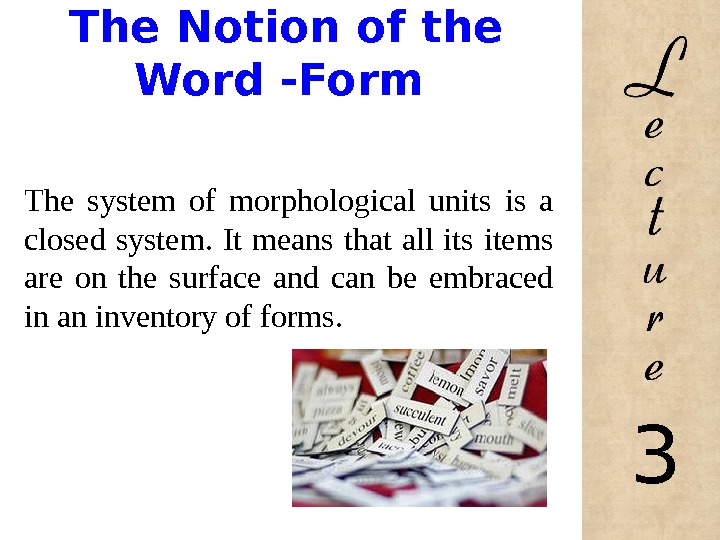
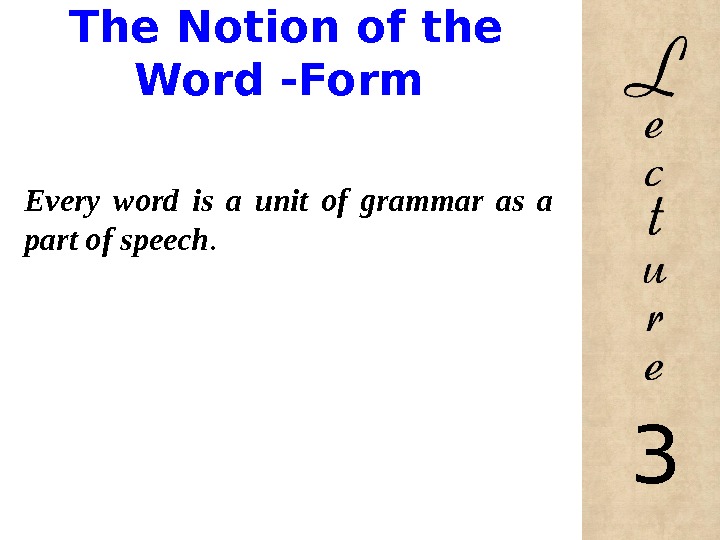
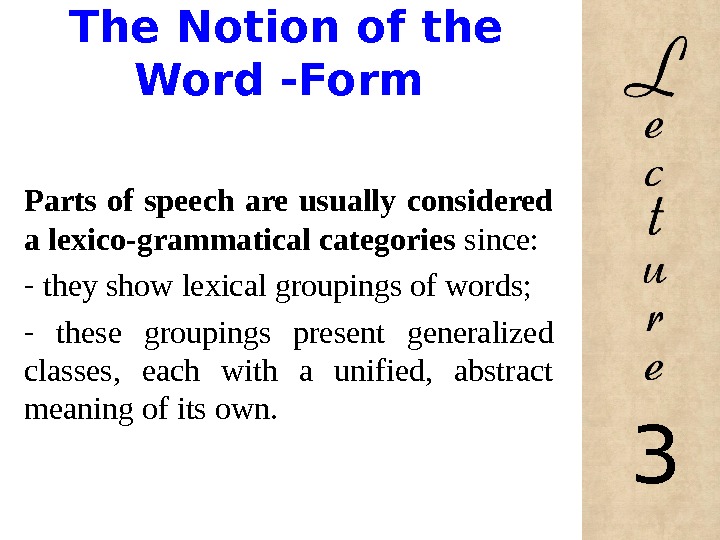
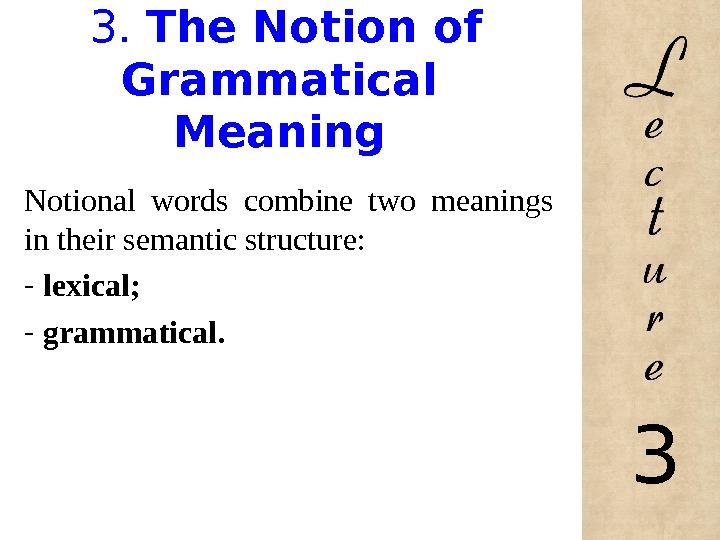

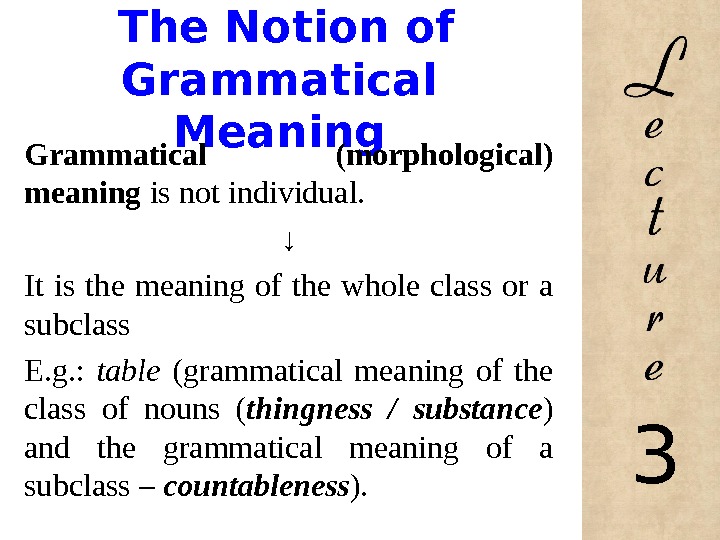
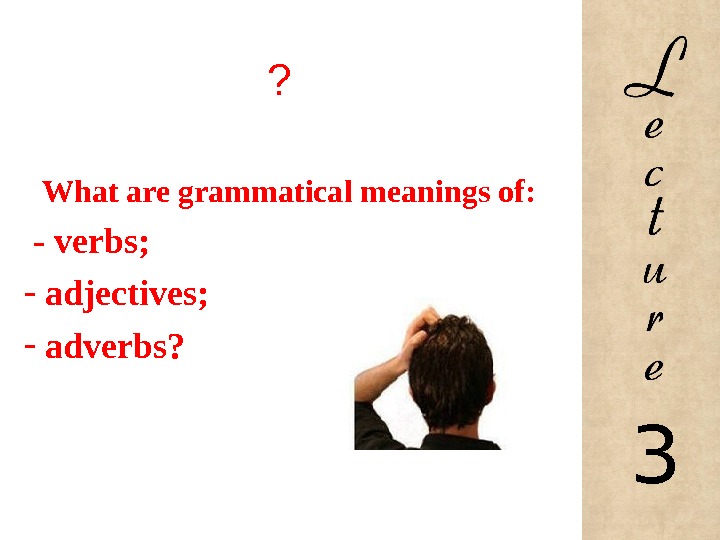
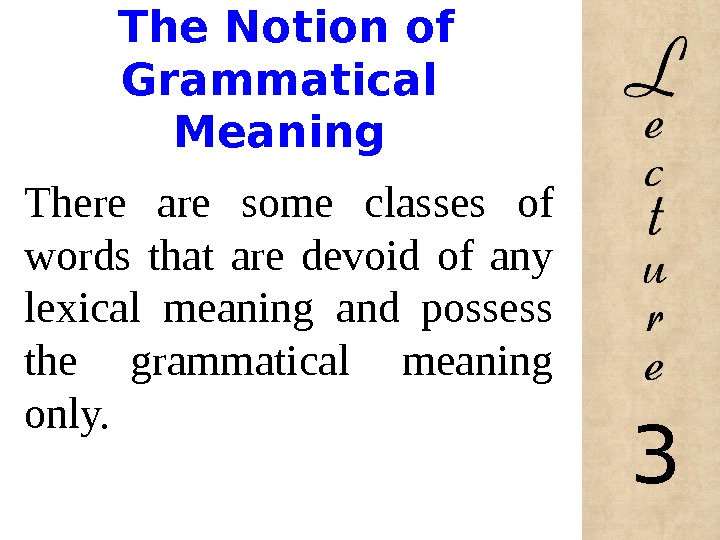
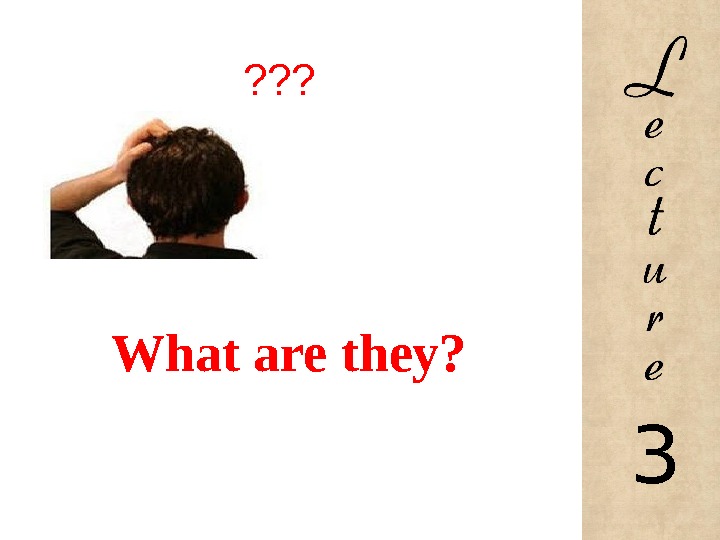


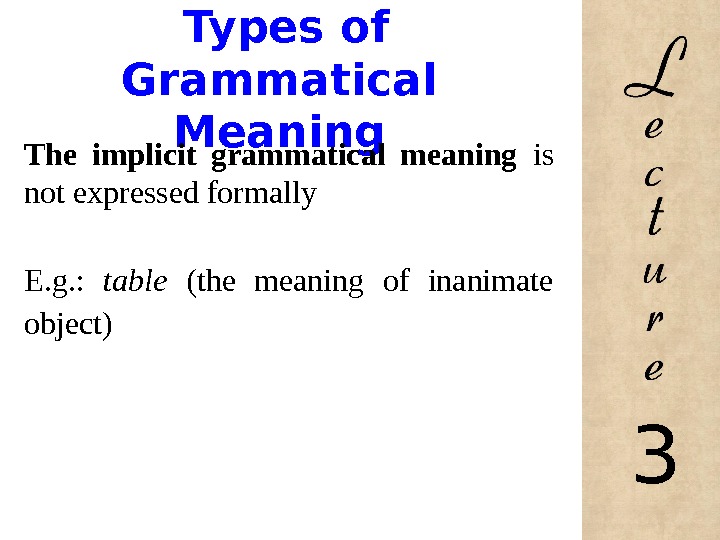
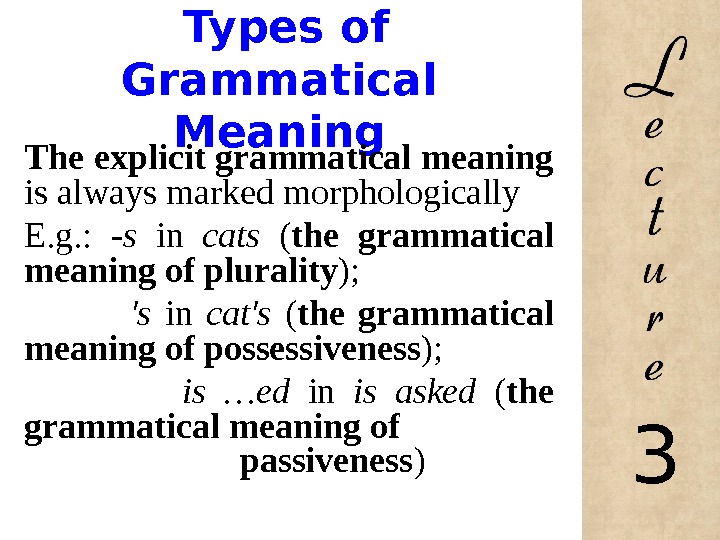

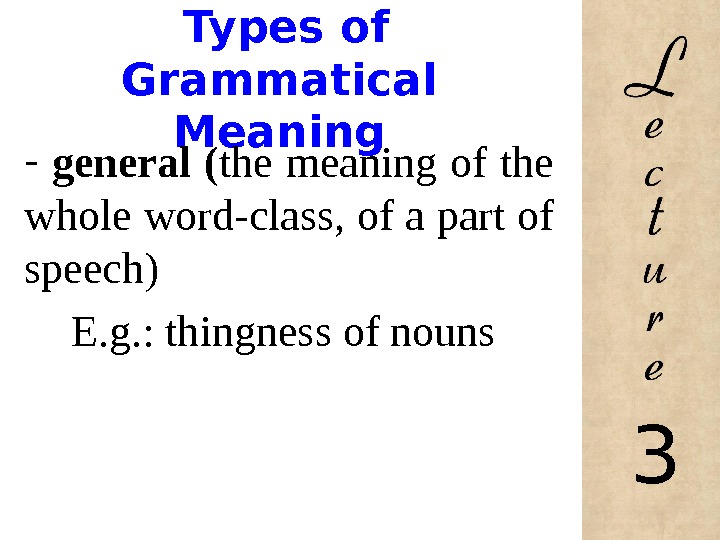
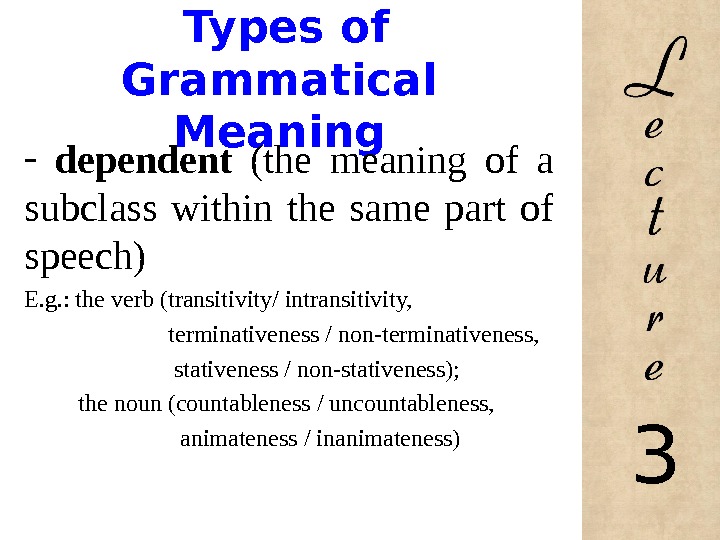
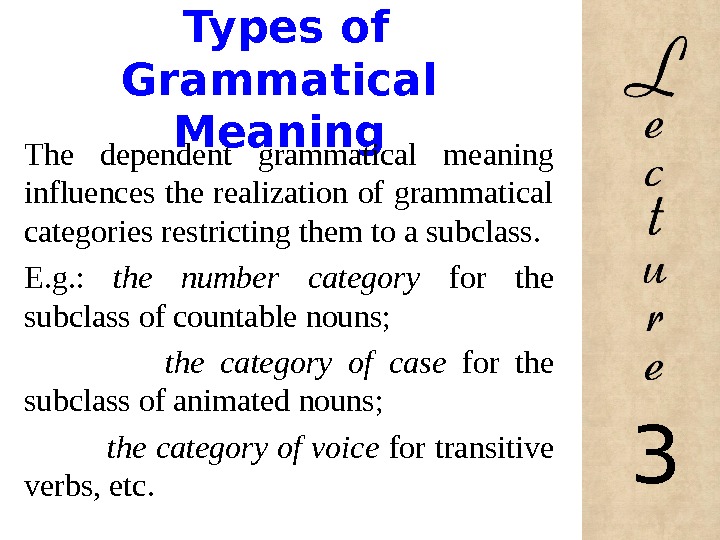

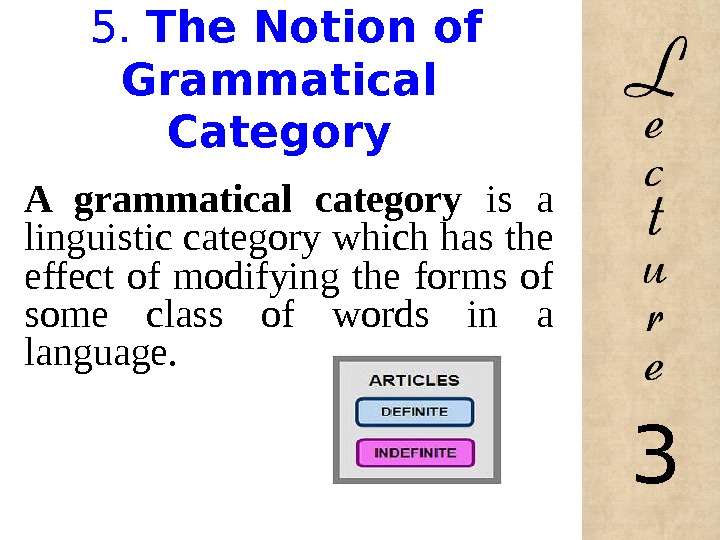


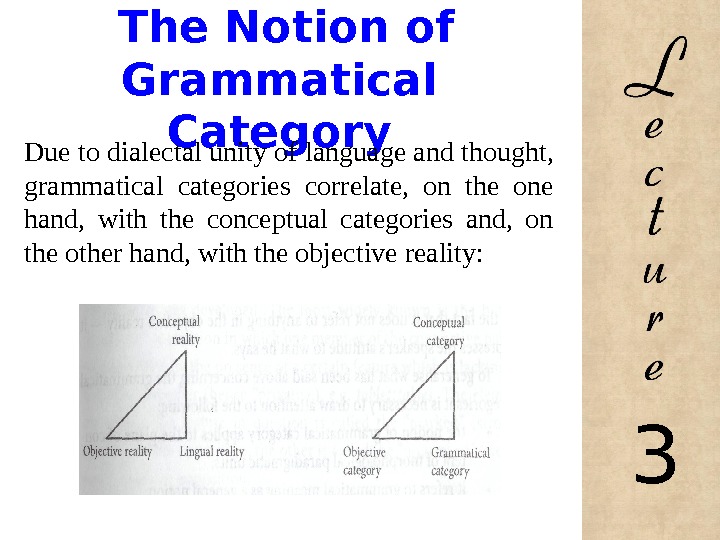
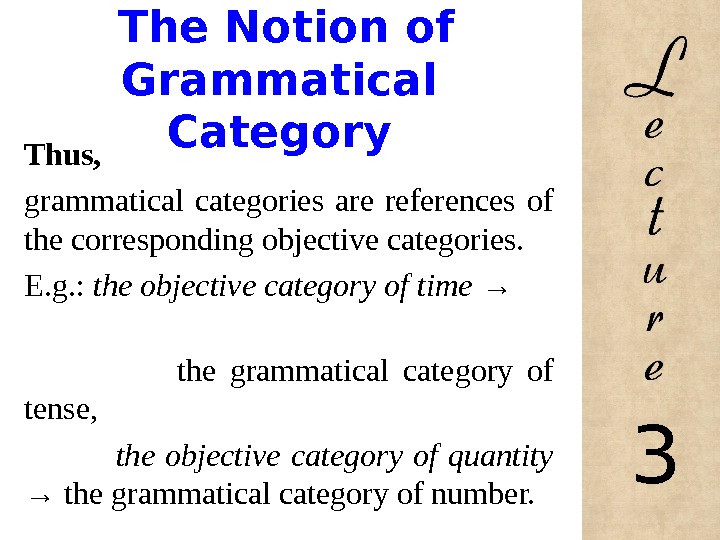
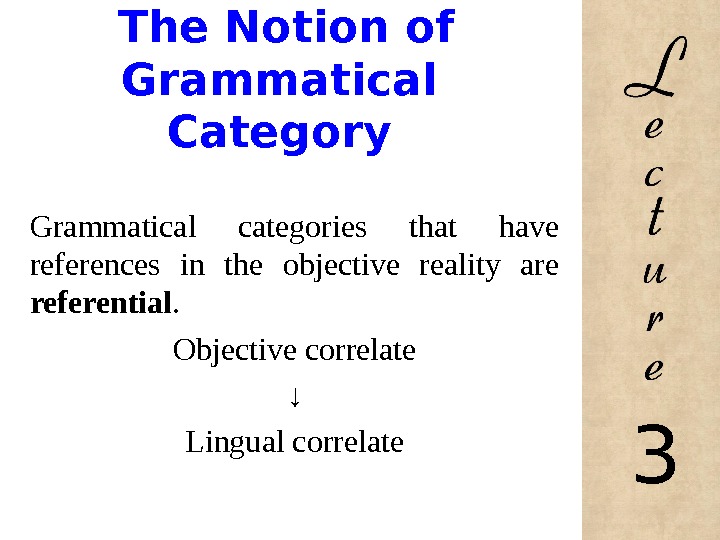

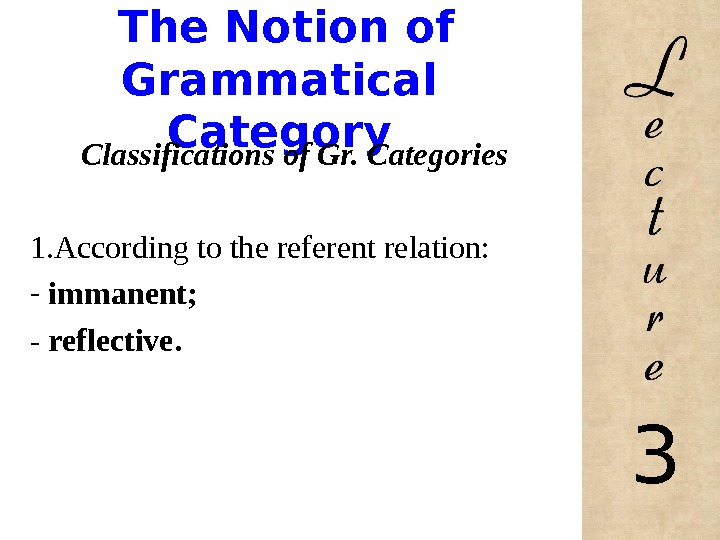
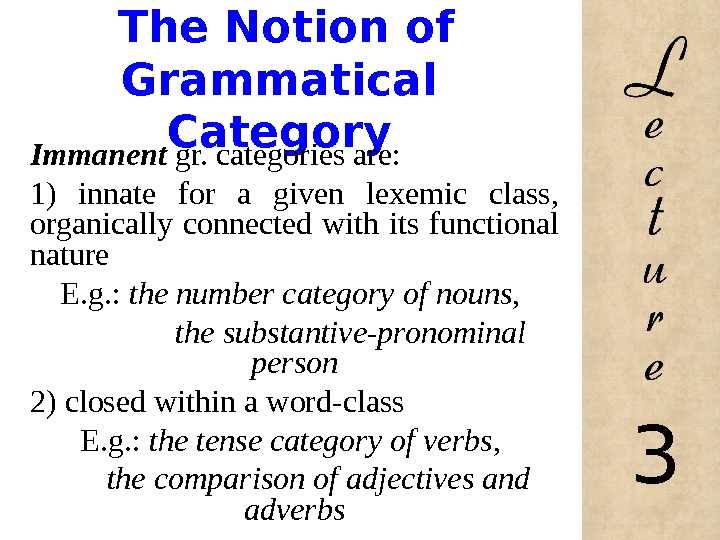
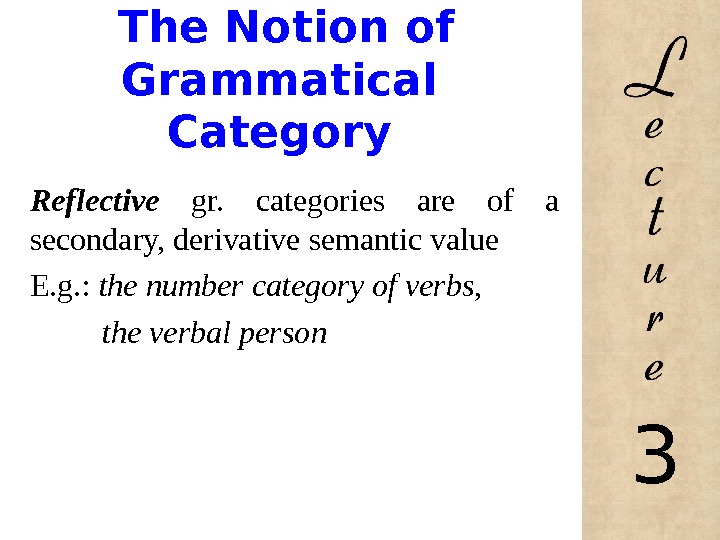

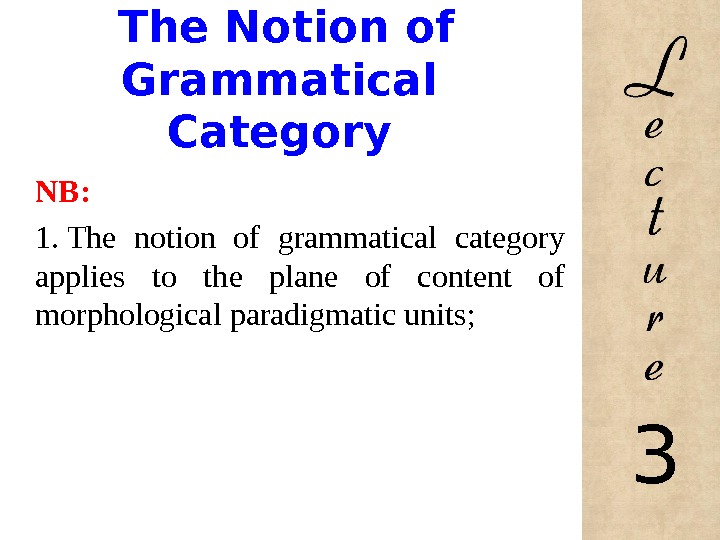
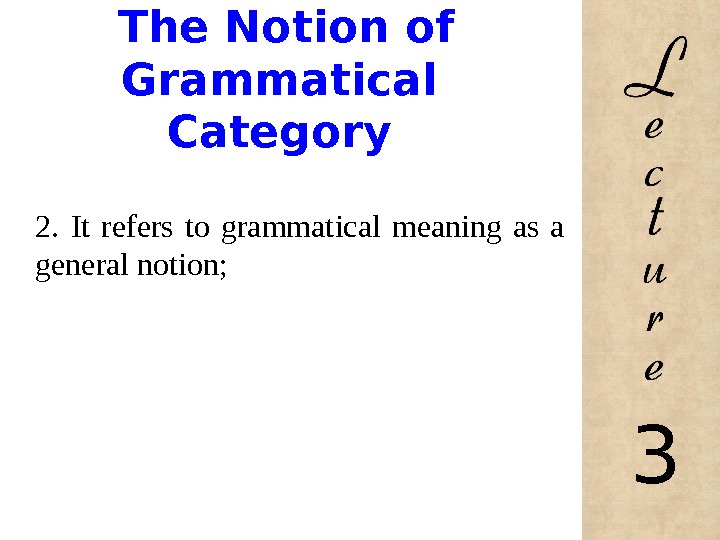

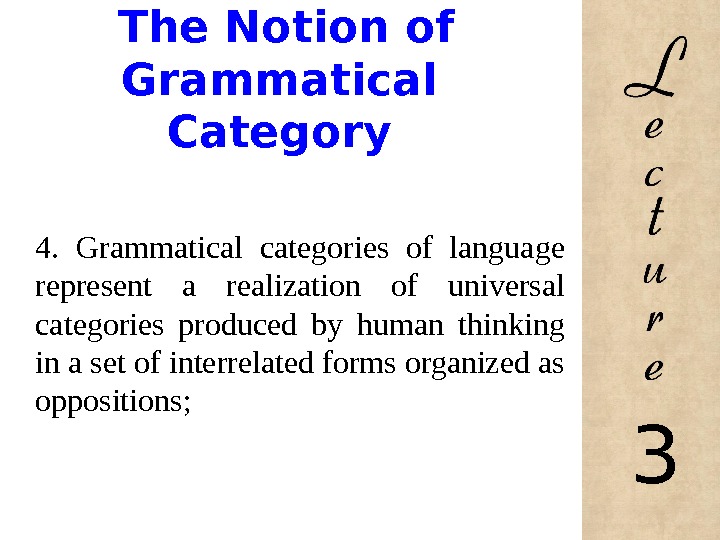

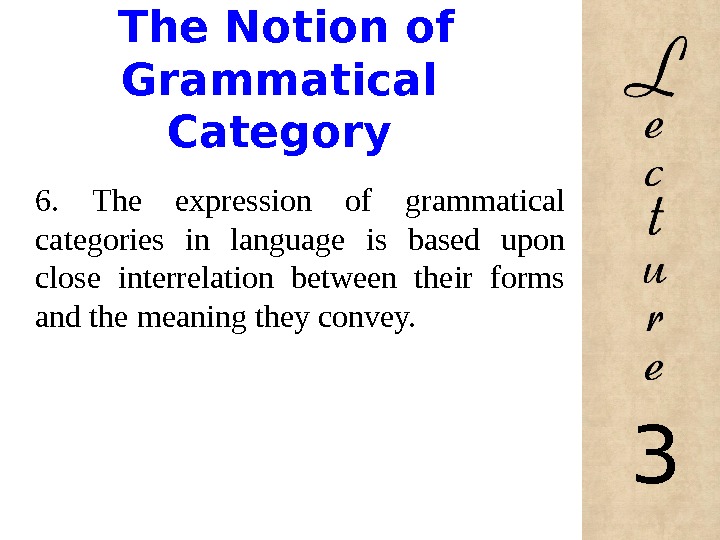

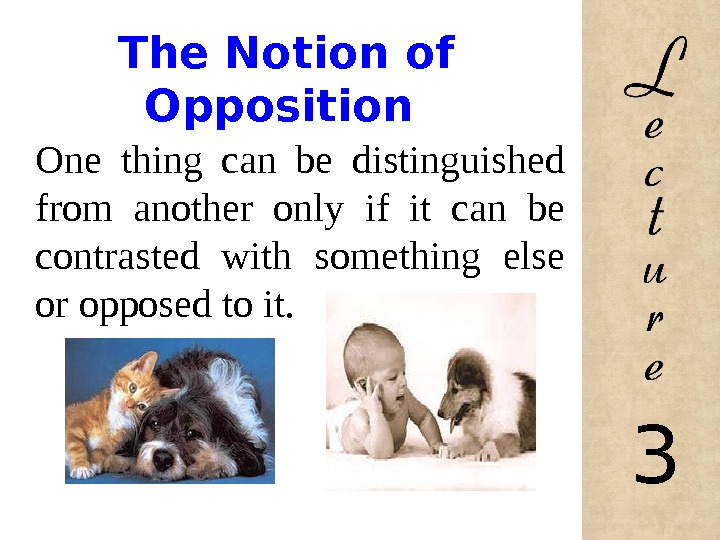
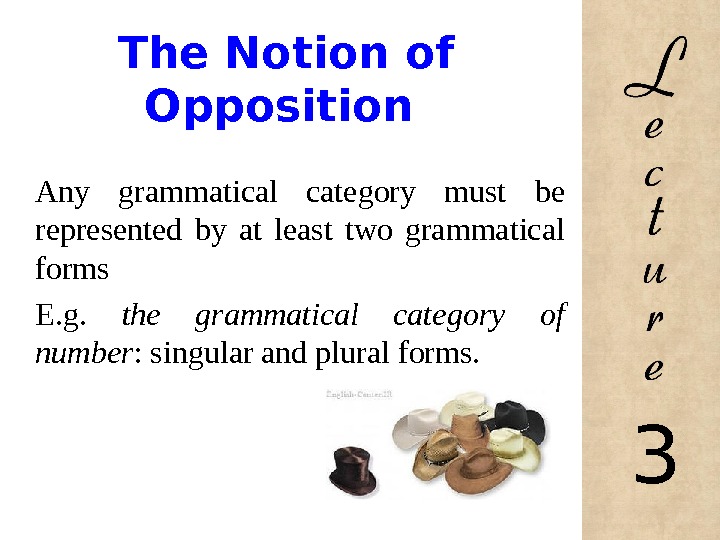
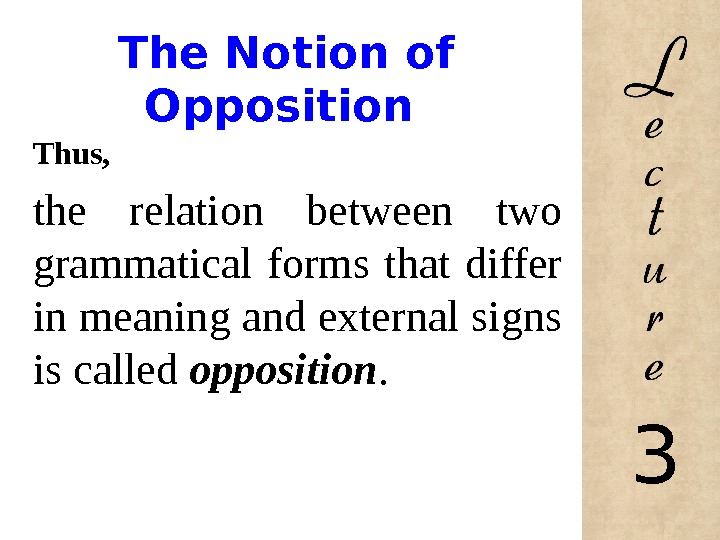




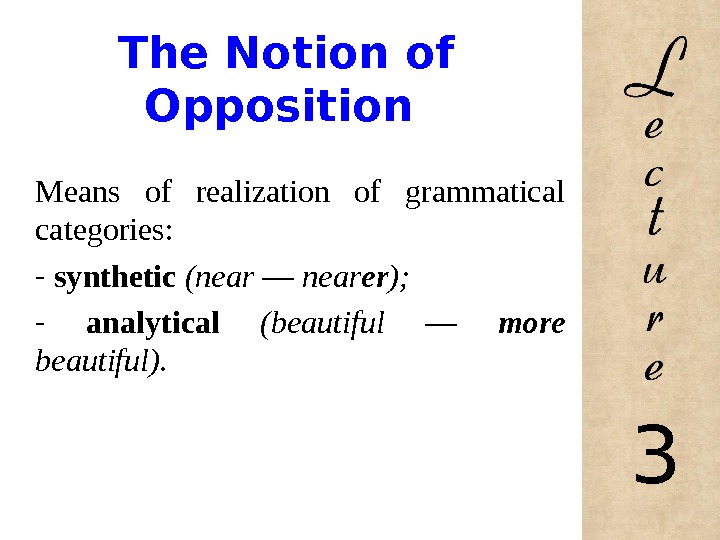











 ixed
ixed


